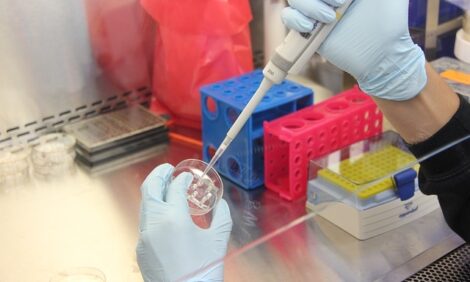



How 50 swine vets plan to manage seasonal respiratory disease in the new VFD era
Fall is here and with it comes fickle weather, dramatic swings in day-night temperatures and, of course, seasonal flare-ups of respiratory disease in swine herds.For as long as any pork producer can remember, fall’s arrival traditionally was a signal to add a respiratory antibiotic to the grower-finisher rations or, at the very least, pulse feed a medication at 7-day intervals to keep the seasonal bugs at bay.
But that’s all changed. Under the new veterinary feed directive (VFD) rules that went into effect in January 2017, producers need to go through their veterinarian to obtain medicated feed additives containing antibiotics deemed medically important to humans by FDA. They can still get old standbys like chlortetracycline and sulfamethazine, for example, but only with a signed VFD. And to get one of those, there needs to be a veterinarian-client-patient relationship (VCPR), which means the vet needs to be familiar with the herd. No VCPR, no VFD.
The pork industry has adapted to the new rules nicely, according to Chris Rademacher, DVM, swine veterinarian at Iowa State University Extension. Still, feed medications will continue to play an important role in swine health, and the “acid test” could come during the first fall and winter of the new VFD era.
More emphasis on injectables
Feed medications are still considered valuable tools for managing bacterial respiratory and enteric diseases. However, the veterinarian also thinks producers will learn to place more emphasis on monitoring individual pigs and being more selective with antibiotic treatments.
“We will need to return to placing more emphasis on identifying sick pigs earlier and treating them with injectable antibiotics, rather than relying on mass medication via the feed or water to treat all the animals,” he told Pig Health Today.
“We have recently completed research at Iowa State University (ISU) that demonstrates the wide variability in both feed and water consumption that occurs with diseased pigs — a problem that doesn’t exist when we are using injectable medications to ensure we are getting the right drug to the right pig at the right time and in the right amount for therapeutic effectiveness."
How will producers proactively protect their herds from respiratory disease while playing by the new rules? That, in essence, was the question Rademacher and colleague Lee Schultz, PhD, put last year to 50 practicing swine veterinarians with more than 20 years’ experience. [1] The survey was conducted just prior to implementation of the new guidelines on Jan. 1. Their responses provide a snapshot of how veterinarians are planning to steer their clients:
Increase vaccinations (21%)
If producers have been reliant on antibiotics to clean up the opportunistic secondary bacterial infections that contribute to devastating porcine respiratory disease complex — particularly Mycoplasma hyopneumoniae, Pasteurella multocida, Haemophilus parasuis, Streptococcus suis, Actinobacillus suis — then improving vaccinations targeting the primary viral agents should help. Those vaccines commonly include porcine reproductive and respiratory syndrome (PRRS) virus, swine influenza virus, porcine circovirus type 2 and porcine epidemic diarrhea (PED) virus.
The VFD gives producers and their veterinarians a good opportunity to review all vaccination and treatment protocols, says Lisa Becton, DVM, director of swine health information and research, National Pork Board.
“Producers should sit down with their veterinarians to discuss how to apply the new VFD and prescription requirements and other herd-health strategies,” she advises. “Review your herd-health program with your veterinarian to ensure that herd vaccinations and medication strategies are up to date and effective for conditions on your farm.”
It’s still early to tell, but Rademacher predicts the pork industry will likely see an increase this year in vaccinations against both primary and secondary respiratory pathogens. Atop vaccination and medication protocols, fall should also bring commitment to walk pens at least daily and pull pigs for individual care and treatment, Becton advises.
“Rapid detection can help manage sick pigs more effectively and prevent virus spread,” she says. “Sit down with workers to discuss how winter may change some on-farm procedures and review your action plans. It’s also a good idea to run through some of the symptoms that could surface among pigs to assist with daily animal observations and a quick response.”
Improve biosecurity (19%)
Research has confirmed that diseases like PRRS and PED are more easily transmitted from herd to herd in cold weather, so biosecurity protocols going into fall not only need to be in place but need to be reinforced for everybody on the operation. Keeping viral diseases in check will also make herds less susceptible to bacterial infections requiring antibiotics.
“These [viral] diseases are more widespread in cooler, wetter conditions, so it’s important to strictly enforce biosecurity measures,” Becton says.
That seasonal increase in disease pressure means veterinarians will probably be urging producers to perform more biosecurity audits than normal, Rademacher says, looking for holes in the system that can be corrected relatively quickly and cheaply — those that may have been seen as not quite cost-effective in the days when low-level antibiotics were abundant. Two potential candidates: Power-washing marketing trailers when they return to the site, and being more diligent about resisting temptation to mix back in a few tail-enders from the end of one flow to the beginning of another.
ISU’s online Production Animal Disease Risk Assessment Program offers a set of risk-assessment questionnaires, databases and reports to help benchmark your disease risk and give a good biosecurity review. It has been proven to accurately predict how long a herd can expect to go without a PRRS break based on its biosecurity level. (Try it here.)
Change stocking density (15%)
Finishing pens can be stocked at a higher density in cool weather as long as feed and water are sufficient. In the past, producers might have been more comfortable with this approach if there was an antibiotic in the feed. That’s still an option, of course, and not all feed medications require a VFD. Still, reviewing stocking density and other environmental factors is a prerequisite for proactive disease management.
Mike Brumm, PhD, former University of Nebraska swine specialist and now facilities consultant, suggests the average stocking density for US finishing facilities is about 7.2 square feet per pig, but it ranges between 6.8 to 8.0. Because those densities have animals on the very edge of performance, producers may want to rethink that space allowance in the face of the VFD and loosen them up a bit, according to the survey.
ISU’s Rademacher expects although the VFD rule may not spur immediate changes in stocking density, it may drive a long-term shift toward adding more space, particularly if, as Brumm suggests, increasing average pig weights and changes in how contracts are written make a whole-cloth re-evaluation of space requirements prudent.
Use more non-antibiotic feed additives (12%)
The reduced access to some antibiotics has ramped up the availability of non-antibiotic additives, as well as the marketing claims that often go with them. Several classes of alternatives have been tried — probiotics, prebiotics, organic acids, enzymes, phytogenics, metals, hyper-immune egg yolk immune bodies, antimicrobial peptides, bacteriophages and even clay.
Although many of those have demonstrated some benefit in livestock and poultry, according to USDA molecular biologist Hyun Lillehoj, PhD, it’s still the general consensus that they can’t consistently reproduce those results in real-life production settings. Questions remain about how they work, what the mechanism is for many, how to better standardize their effects, and how to improve their effectiveness in the real world, Lillehoj wrote in the June 2017 edition of the journal Animal Health Research Reviews. [2]
Change animal buying (11%)
Because in-feed antibiotics were traditionally seen as health insurance policies, limited access to medically important ones could make some producers less willing to commingle multi-source pigs or buy pigs that don’t come from health-assured sources, Rademacher says.
Make housing changes (10%)
Although researchers have known for decades the physiological effect cooler temperatures can have on pigs, particularly baby pigs, they’re only now coming to fully appreciate the impact it makes on the pig’s immune system. One study in 2012, for instance, showed baby pigs at 64° F were unable to mount a fever response necessary to fight infection and also showed a more damaging immune response compared to pigs housed at 93° F. [3]
That insight helps explain why a simple draft in the barn can prove so damaging. It also makes a properly functioning ventilation system the top priority in fall.
“Walk through your operation and see what needs fine tuning, whether that involves building maintenance, manure management strategies, staff scheduling or vaccination protocols,” Becton says.
Make feed changes (10%)
Producers are accustomed to making ration changes in anticipation of pigs’ tendency to eat more feed in cold weather to compensate for heat production. Now, some additional feed adjustments may be prudent because the medically important antibiotics can’t be used for improving growth rate or feed conversion. Most cost-effective diet changes probably will be made in the nursery and creep feeds, where better ingredients and more labor-intensive feed management can make a difference in feed consumption in the all-important first few days on feed.
Other changes (3%)
Rademacher and the study’s co-author Schulz reported a short list of additional practices vets planned to help producers adjust to the VFD, including:
- Train employees to spot diseases better
- Hire more vets
- Increase weaning age and manage the operation to better stabilize sow-herd health, pig flow and disease elimination.
That focus on training employees should remind managers to take the opportunity to review their entire medical program, not just the feed changes that the VFD has brought. Take inventory and record use histories on all products, including injectables and water-solubles. Write treatment protocols for different diseases for your operation if you don’t already have them in place.
And finally, with all those recommendations said, don’t forget that access to antibiotics is the same today as it was before the new rules took effect, Rademacher advises. Other than removing performance claims from antibiotics deemed medically important by FDA, none of the currently available products’ therapeutic claims have changed under the new VFD rules.
All the VFD really does is insert better relationships between vets and producers where they might have been weak or nonexistent before. In anticipation of fall’s health challenges, that’s not necessarily a bad thing.
1. Schulz LL, Rademacher CJ. Food and Drug Administration Guidance 209 and 213 and Veterinary Feed Directive regulations regarding antibiotic use in livestock: A survey of preparation and anticipated impacts in the swine industry. J Swine Health Production. 2017 Sept/Oct:25(5):247-255.
2. Gadde U, Kim WH, Oh ST, Lillehoj HS. Alternatives to antibiotics for maximizing growth performance and feed efficiency in poultry: a review. Anim Health Res Rev. 2017 Jun;18(1):26-45.
3. Carroll JA, Burdick NC, Chase CC Jr, Coleman SW, Spiers DE. Influence of environmental temperature on the physiological, endocrine, and immune responses in livestock exposed to a provocative immune challenge. Domest Anim Endocrinol. 2012 Aug;43(2):146-53.









